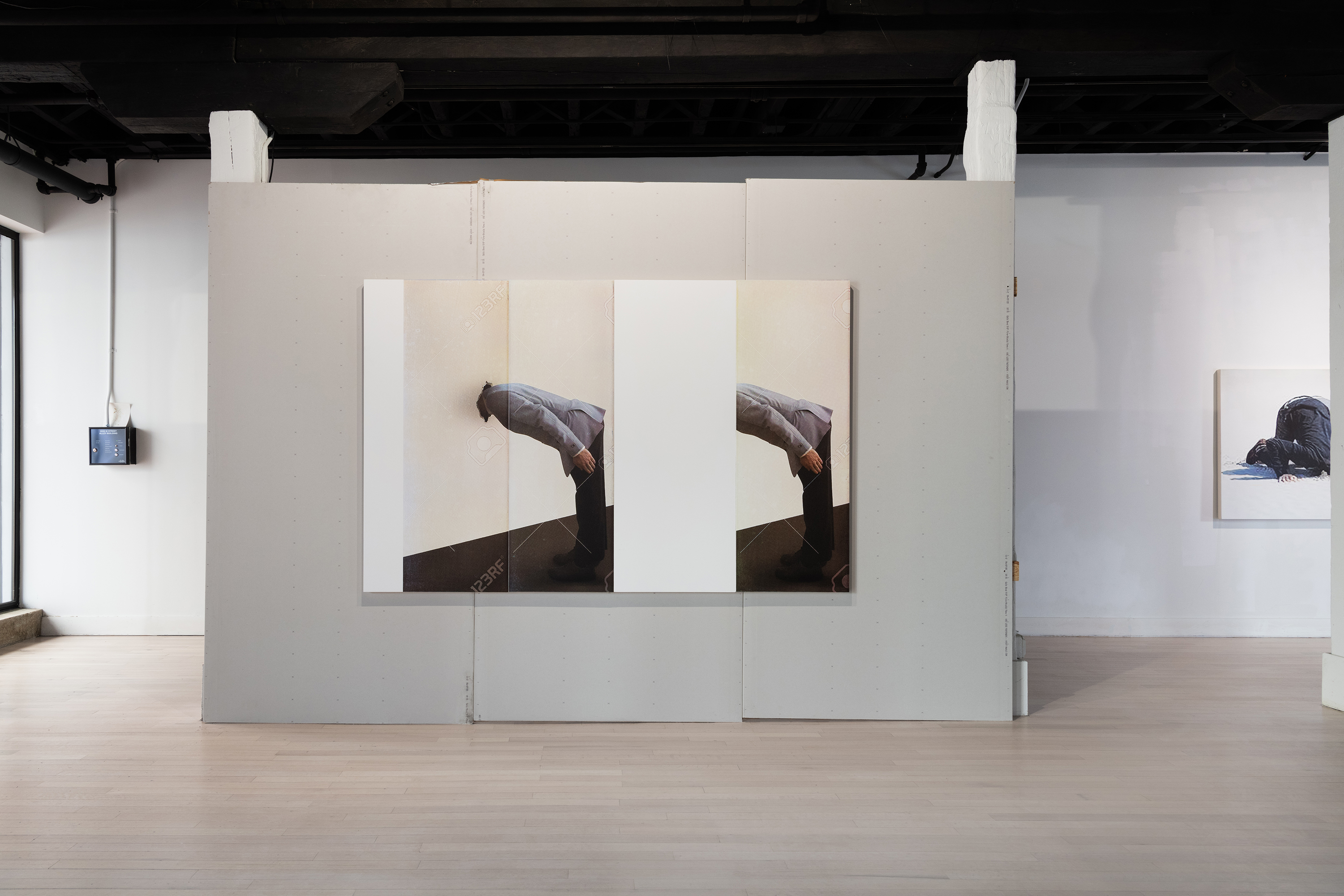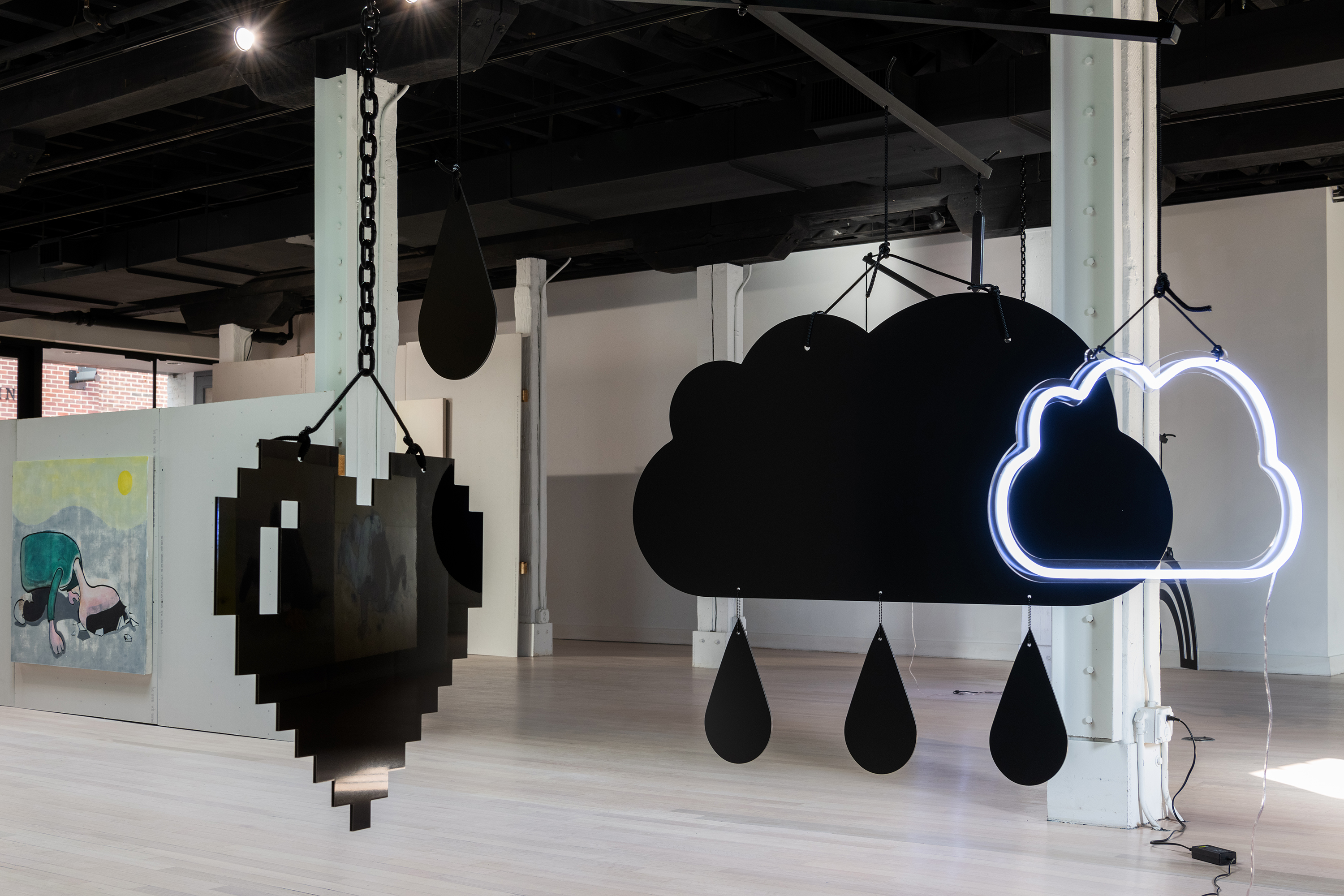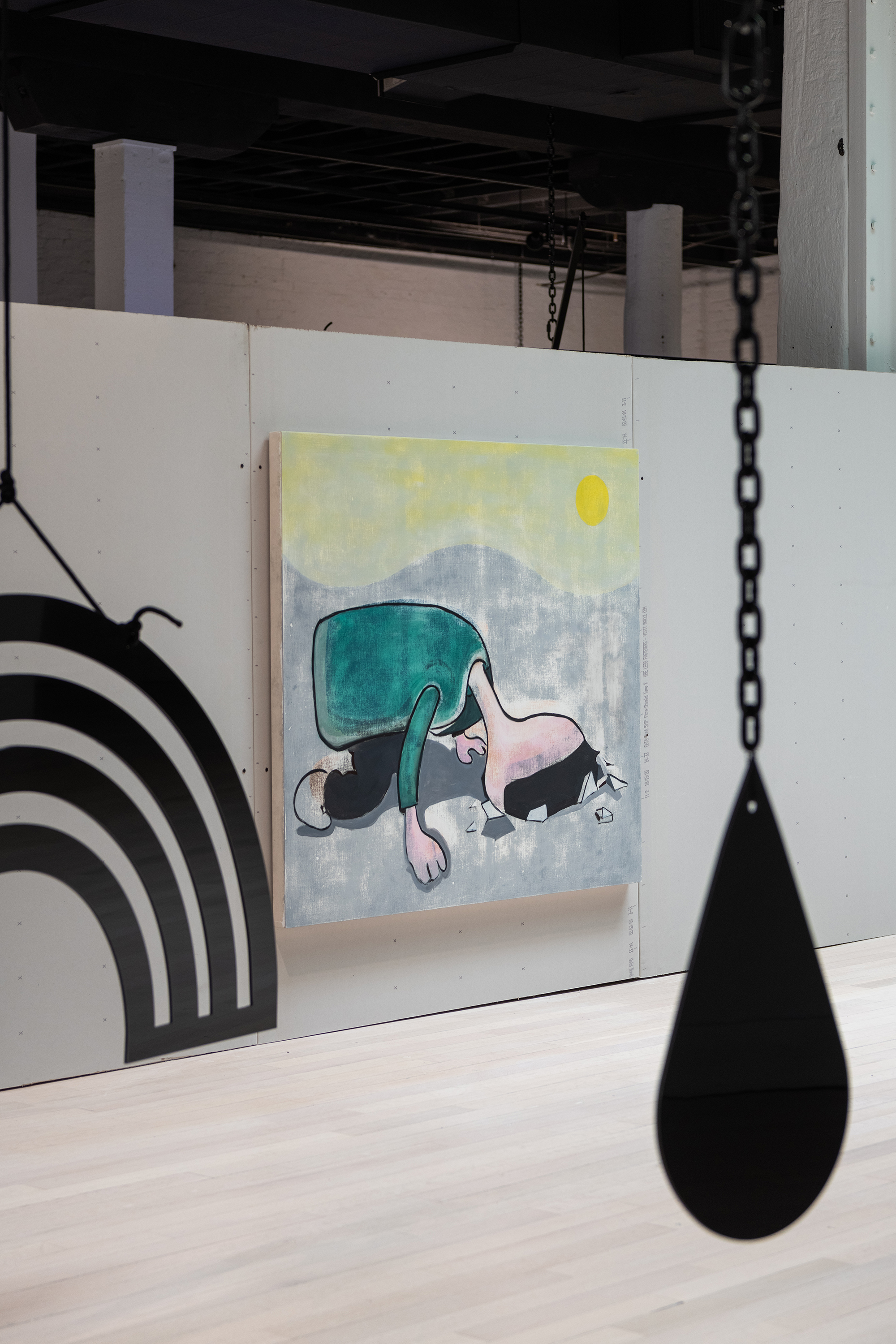The artists’ latest exhibition, “Airlok or Gazing Into The Void” at D.C.’s Von Ammon Co., was inspired by Google Image Search.
For artists Julia Wachtel and Wendy White, inspiration doesn’t need to come from much further than a Google Image Search. In a new show at Washington D.C.’s Von Ammon Co., titled Airlok or Gazing Into The Void, both artists culled generic depictions of familiar emotional states for those who are living, ahem, in these trying times. For Wachtel, that image was of a man with his head in a hole, representing at once feelings of shame, of isolation, of frustration, which she painted as a single-motif in several different styles. For White, that image was a more hopeful one: pixel art of an extra life from a video game in the shape of a heart, which she sculpted in steel and placed on a hanging mobile along with other ubiquitous, flat images that have existed for as long as the internet has.
Though these interpretations of the past several months’ events are different, they certainly exist in tandem. As they’re presented at Von Ammon Co., none of the art is on the walls, and instead, the two artists decided to create a bespoke structure to present the pieces on, to highlight their connectivity, where they will remain on view through March 14. Curious to learn more, GARAGE gave White and Wachtel a call.

From what I read, it seems like the work addresses two different kinds of troubled American archetypes: the American consumer (Wendy’s work), and the white American man (Julia’s work). It’s funny to think of those two kinds of people being addressed in the same show.
Wendy White: I think our work overlaps with an interest in advertising and symbology and the mutability of images. For me, I wouldn’t say it’s really about the consumer, but as we are consumers of images and motifs, and as symbols move through us and around us, it’s been a big part of my work for a while. I love the idea of the brand of the sheet rock on the outside, because that’s a big part of my work: making sense of and navigating the world of symbols. So, a lot of my work is like clip art. If you Google “cloud” and “rainbow,” that’s what you get. And I’ve manipulated them over the years to make them exactly the way I want, but they come from clip art, so they’re really ubiquitous. I think we both have a really similar way of finding images. I don’t like to make images, I like to find them, and then use them. I wouldn’t call what I do appropriation, but I lift and recast things that already exist.
Julia Wachtel: I have come up with a word that I substitute for appropriation: “reclamation.” The advertising world of images claims us as consumers. It’s very hard to escape the reality of the images in the world, you really have to climb into a hole to avoid that. So, in a way, the images own us to a certain degree. And I see the political aspect of taking images from the culture as saying: “I am essential to your existence, this image needs a consumer. Therefore, you’ve given me a certain power in the way in which you function, and I’m gonna take that power back and become the producer of that image.” But, [Wendy], I didn’t realize your iconography was from clip art. Because most of my cartoons now are from clip art. I mean, I kind of understood the space they were from in a more general way, but I didn’t know that was literally where you found them.

WW: Well, the pixel heart is health, or lives, in video games. So, I chose them based on how they pop up in other places. Now, we have a cloud in our weather app. It’s an Instagram filter. It’s everywhere, and it represents this vague idea of weather or an atmospheric shift. So I just adopted them as stand ins for emotional states. I think they take on different personalities. Sometimes they’re dripping oil rainbows, but they’re always dystopian because they’re usually black and they’re always close to the floor. I originally got them from googling and finding vector-based rainbows, and there are some that I’ve used more than others. But just stuff I’ve grabbed from the internet.
JW: We’re both finders. For me, my search when I’m working on a painting may come from an emotional idea. Like, if you plug in “dissatisfaction” to an image search, it’s really interesting. Sometimes it’s very obvious what you’re gonna find, but other times it’s not at all. And it becomes a path through the cultural mood, which represents itself in the images that come up with these words.

Where else did you lift some of the images from your “Head in Hole” paintings?
JW: Basically, all the images for the show that I use are from that search, “head in hole.” And, you find the cartoons and you find the photographic ones. And most of the photographic ones are from when you do the search. There are a lot of stock photos. And stock photos are a commercial thing. And you wonder: Why did they make this? Who is buying this, and what is the context it’s going into? But it all came from that very limited search.
One pothole image specifically reminds me a lot of Bruce Nauman. What has helped you feel inspired? Who have you looked to, if anybody?
JW: I don’t think there is anyone who has helped me. Whether that’s another artist, a political person, or a friend. Not to sound solipsistic or anything. But for me, sometimes, unlike Wendy, who said at the beginning she felt like it was irresponsible or morally wrong to make art at the beginning of COVID and Black Lives Matter, another overwhelming emotional situation, I almost feel like it is my responsibility to somehow reflect back something that is useful. And I’m not saying I’ve achieved that, but the impulse to do that has weighed down on me. This is my job. That thought motivates me.
